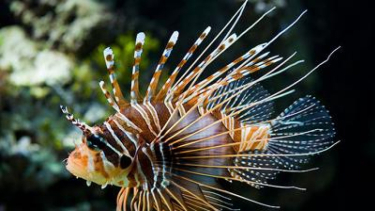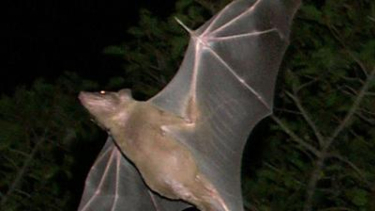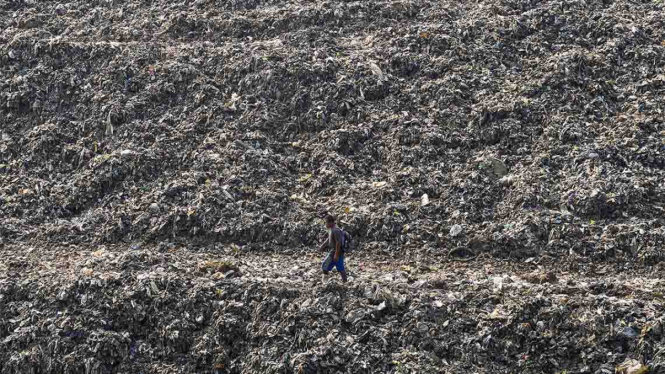- pixabay
VIVA – When people visit the wild nature, then, they must try to survive especially when the food supply is running out. Obviously, many plants, fruits, animals such as birds, mammals, reptiles, and insects can be eaten in the wild nature.
Not infrequently, foods in the wild have great nutrition. However, do not carelessly choose and consume something that looks attractive and can be eaten. It turns out that not all food in the wild is edible, such as some of the following plants and animals.
1. The Green Spored Parasols, Mushroom
Jamur Indigo Milk Cap
- Tangkapan Layar
One plant that is advised not to be eaten in the wild is the green-spored parasols. This is a poisonous mushroom in North America. Even when these mushrooms are young, they are similar to the white button mushrooms we see on pizza, salads, and at the market.
Then, there's the prized morel mushroom, which has an evil twin in the poisonous "false morel"; so are the delicious chanterelles, which look a lot like poisonous jack-o'-lantern mushrooms. So, be careful and don't eat mushrooms you find growing in the wild.
2. Poison Ivy
Mobil di China diselimuti tanaman merambat
- Dailymail
Poison ivy can resemble other harmless vines. This plant produces urushiol oil which is known to irritate the skin. If someone touches it, it can get a terrible rash and even blisters for a time that lasts quite a while. Furthermore, after exposure, people can become allergic.
3. Horse Nettle
Who doesn't love plump cherry tomatoes? However, if someone see one growing in a thicket while climbing, don't pull it out and eat it because it can be very dangerous if eaten. Horse nettle is one of them.
Nettle fruit is usually yellow or green in color, and is shaped like a cherry tomato. If someone puts this fruit in their mouth, people can feel stomach pain and difficulty breathing.
4. Stagnant Water
Ilustrasi genangan air
- VIVA.co.id/Ichsan Suhendra
If you don't bring enough water on your hike, please do not take the stagnant water for your thirst. Such water may appear harmless, especially if it is not covered in a slimy green layer.
Any stagnant pool of water, or even an area of ??slow-flowing water, attracts countless insects that want to breed, among them mosquitoes, which are notorious for transmitting serious diseases, such as malaria, dengue fever, and the West Nile virus.
5. Rhododendron
Rhododendrons are sometimes called the King of Shrubs because these flowering evergreen plants thrive in temperate landscapes. Large and leathery, rhododendrons look pretty with red, white, pink, or purple flowers.
Unfortunately for those looking for a snack in the wild nature, every bit of a rhododendron can lead to stomach irritation and abdominal pain. Even worse, it might cause an abnormal heart rate, convulsions, coma and perhaps death.
6. Lionfish
Lionfish, ikan yang invasif dan mengancam spesies hewan lainnya
- wikipedia.org
The colorful lionfish, native to the Pacific Ocean, has a voracious appetite. Recently they have taken over the waters of the Caribbean, where they are wreaking havoc on coral reef ecosystems. The National Oceanic and Atmospheric Administration (NOAA) recommends eating lionfish to help get rid of them.
If a person eats lionfish, not only is he at risk for symptoms of food poisoning such as diarrhea, vomiting, fatigue, but also neurological problems such as tingling in the hands and feet, a feeling that your teeth are loose.
7. Bat
Kelelawar
- sciencemag.org
Many people in some areas of the world eat bat meat. One of the reasons is because bat meat contains a great source of protein, which can be smoked or added to soups. However, bats harbor more viruses than any other mammal on Earth. In fact, it is believed that the 2014 Ebola outbreak originated in bats in West Africa.
Ebola is not the only disease linked to bats. The Chamorro population on Guam suffers from a high level of a strange neurological disease that, in turn, was traced to the consumption of the flying fox Mariana, a type of bat.
These mammals, through the habit of eating the seeds of the cycad plant, acquire neurotoxins and thus become dangerous for human consumption.
8. Foxglove
Not all beautiful flowers can be eaten while in the wild, one of which is the foxglove. Known as fairy bells, rabbit flower, throat moss, and witch's thimble, the foxglove grows to about 1 meter in height.
The leaves of Foxglove are important to the medical industry, as they are used to make the heart drug digitalis.
But, please do not eat the foxglove flower, its leaves or any part of this plant. If you do, you will most likely experience nausea, vomiting, cramps, and diarrhea. The most dangerous thing is that the plant can affect the heartbeat, too.

































